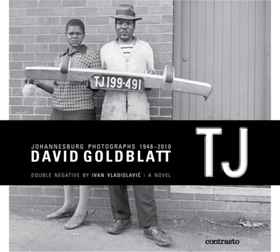Clarkson traces her 'pencil of light' over TJ/Double Negative

She will be presenting this paper, alongside Professor Dorothy Driver (University of Adelaide) and Dr Lucy Graham (Stellenbosch University), as part of a panel, called 'Reading South Africa', that is on the programme of the conference, Samuel Beckett: Out of the Archive. Nobel Prize-winning author JM Coetzee will be one of the special guests at this conference, due to take place at the University of York from 23 to 26 June. [See also: Parsons to present at pioneering Beckett archive conference.]
Clarkson is the author of JM Coetzee: Countervoices (2009), and hosts the Coetzee Collective discussion group at UCT. The title of her paper, Light-Writing, is a 'phonetic pun' on White Writing (1988), Coetzee's collection of critical essays on the culture of letters in South Africa. She points out that 'light' is another word for 'photo' and 'writing' is equivalent to the word 'graph', so 'Light-Writing' might also be read as 'Photograph'. In the paper, she explores the interplay, or as she puts it, the 'chiasmatic relationship' between photographic images and text in Ivan Vladislavic and David Goldblatt's TJ/Double Negative.
This joint work of photography and fiction combines Goldblatt's historic images of Johannesburg with a fictional memoir by Vladislavic, which tracks the influence of an esteemed photographer on the life of an itinerant young man who later becomes a photographer himself. The publication was was recently awarded the Krazsna-Krausz Best Photography Book Award, billed as the UK's leading photography and film book prize.
'Using TJ/Double Negative as my point of departure, I explore the effects of photography's invitation to narrative thought, and writing's exposure of mental images: in the tensile relation between Goldblatt's images and Vladislavic's text, the viewer-reader imagines pictures not seen and meanings not uttered,' says Clarkson. 'Underpinning my paper is an appreciation of Robert Smithson's "provisional theory of non-sites", and Roland Barthes' sense of the dynamics of a "blind field".'